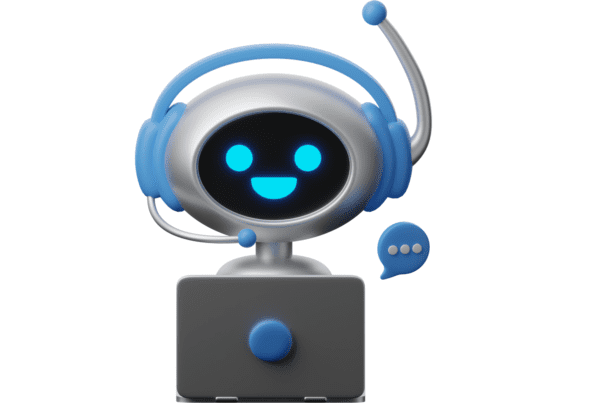Fundamentals of Conversational AI vs. Generative AI
Definitions, Differences, and Use Cases
Struggling to understand the differences between conversational AI vs. generative AI?
While both are highly useful and popular subsets of artificial intelligence (AI), they employ very different techniques, have differentiated use cases, and pose unique challenges.
Conversational AI and generative AI have both skyrocketed in popularity among businesses for greater innovation and efficiency.
In today’s competitive landscape, companies must learn how to use AI technology to their advantage, or be outpaced. According to a Gartner study, 79% of corporate strategists believe that automation and AI will be critical to their success over the next two years.
It’s vital to start with a foundational understanding of two of the most popular types of AI for businesses, and see which one (if not both) is right for your business.
What is conversational AI?
Conversational artificial intelligence (AI) was created to interact with humans through omnichannel conversations.
This type of AI is designed to communicate with users to provide information, answer questions, and perform tasks—often in real-time and across various communication channels.
Conversational AI learns from datasets, including real human interactions, usually specific to the industry that the AI is being trained in, to ensure that it creates intelligible and relevant responses.
For this reason, conversational AI aims to be more natural and context-aware than generative AI.
Typically, conversational AI incorporates natural language processing (NLP) to understand and respond to users in a conversational manner.
Conversational AI is:
- Common for customer service and support
- Built to sound natural and respond to context appropriately
- Used for both text and voice conversations
- Able to adapt to users for more personalized experiences

What is generative AI?
Generative artificial intelligence (AI) is trained to generate content, such as text, images, code, or even music.
It creates entirely new content that is similar to the input data that it was trained on, and what it produces is dependent on the prompt it is given.
Midjourney, which provides users with AI-generated images, is an example of generative AI.
Unlike conversational AI, which focuses on generating human-like conversations, generative AI is used to write or create new content that is not limited to textual conversations.
Generative AI models can be trained on a variety of large sets of data, usually sourced from the internet. By learning patterns from these data sets, generative models create unique content.
Generative AI is:
- Built for content creation
- Useful for a variety of different industries
- Highly adaptable based on training data
It’s worth noting that because generative AI is meant to create new content, it is essentially always making things up based on the given training data.
For this reason, generative AI has a propensity for “making up” inaccurate facts. It should only be used in the right contexts—but more on that later.
Essential AI Systems
Machine learning (ML)
Machine learning (ML) is a foundational approach within artificial intelligence that enables computers to automatically learn, make decisions, and adapt. Machine learning typically requires human intervention (supervised learning) to curate its training datasets and refine its models.
Machine learning is crucial for AI’s ability to understand and respond to users.
During training, machine learning algorithms enable AI to learn patterns, adapt to new data, and improve performance over time.
Training accuracy can be increased through the use of larger, high-quality, and diverse datasets.
Machine learning algorithms are essential for various applications, including speech recognition, sentiment analysis, and translation, among others.
Deep learning is a subset of machine learning that uses multi-layered neural networks to understand complex patterns in data.
Generative adversarial networks (GANs)
Generative adversarial networks (GANs) are used in generative AI to help create content that looks as real as possible.
GANs are a system with two parts: one part (the generator) tries to make new images, sounds, or other types of data, and the other part (the discriminator) judges them. The generator’s job is to create content that’s realistic enough to fool the discriminator.
In this manner, it enables AI to create content that looks so real that the discriminator does not catch it, leading to high-quality, very realistic outputs.
Natural language processing (NLP)
Natural language processing (NLP) is a subfield of AI that encompasses various techniques and technologies used to analyze, understand, and generate human language.
For example, NLP can be used to label data during machine learning training in order to provide semantic value, the contextual meaning of words.
Natural language generation (NLG) is the part of NLP that is responsible for generating outputs that are coherent and contextually appropriate.
Conversational AI and generative AI are specific applications of natural language processing.
Large language model (LLM)
Large language models (LLMs) are integral tools used within AI for handling complex language tasks.
LLMs are a giant step forward from NLP when it comes to generating responses and understanding user inputs.
For example, with generative AI, LLMs are used to process and generate human-like text. They’re employed specifically for text-based tasks—like writing, summarizing, and translating.
With conversational AI, LLMs help construct systems that make AI capable of engaging in natural dialogue with people. A large language model may be employed to help generate responses and understand user inputs.

Differences between Generative and Conversational AI
The main difference in generative and conversational AI is in their purpose. While generative AI creates content, conversational AI holds human-like conversations.
Both types must understand and respond to text inputs, but their reasons for doing so are very different. This means that they have differing goals, applications, training processes, and outputs.
Both generative and conversational AI technology enhance user experiences, perform specific tasks, and leverage natural language processing—and both play a huge role in the future of AI.
Are conversational AI and generative AI mutually exclusive?
It’s worth noting that conversational and generative AI are not mutually exclusive terms.
ChatGPT, for example, is both conversational and generative. It holds conversations with users and generates content.
While conversational AI functions as a specific application of generative AI, generative AI is not focused on having conversations, but content creation.
Both are large language models that employ machine learning algorithms and natural language processing.
Conversational AI can be considered generative AI, but the reverse is not true.
Conversational AI vs. Generative AI Comparison Chart
Here is a quick summary of the differences between conversational AI vs generative AI.
| Generative AI | Conversational AI |
| Built to create new content | Built to hold conversations |
| Is used for content creation and design | Is used for customer engagement and service |
| Trained on large datasets from the internet | Trained on conversational datasets |
| Uses input and data to generate content | Uses input to create human-like responses |
| Best for creative industries | Best for industries that provide personalized customer service |
Use Cases for Conversational AI vs. Generative AI
AI is transforming the way that businesses operate worldwide. By 2030, the global AI market size is expected to reach nearly $2 trillion.
Both conversational and generative AI represent next-generation solutions for operational efficiency, scalability, innovation, and customer experience improvements.
How businesses can use conversational AI
While businesses struggle to keep up with customer inquiries, conversational AI is a game-changer for your contact center and customer experience.
For businesses, conversational AI is often a chatbot or a virtual assistant. However, more intelligent forms of conversational AI (such as Verse.ai) exceed the capabilities of a chatbot.
Conversational AI responds right away, streamlining customer engagement, support, and follow-up with personalized customer service.

Unlocking sales, marketing, and support efficiency, conversational AI is often utilized for:
- Lead generation. With the ability to instantly respond, conversational AI is great for lead follow-up and personalized marketing.
- Lead qualification. Conversational AI can ask the right questions to automatically qualify leads.
- Customer service. Similarly, conversational AI is perfect for handling customer inquiries and providing information 24/7.
- Support. Not only can an AI-enabled virtual assistant follow up with support questions or requests, it can also ask related questions and present all necessary information to support agents, who step in when needed.
Conversational AI promotes scalability in customer service and lead engagement, as it can engage customers exponentially faster, and is active 24/7.
Because conversational AI can be programmed in more ways than a chatbot, it is capable of greater personalization in its responses, creating a more authentic customer experience.
When using AI for customer service and support, it’s vital to ensure that your model is trained properly. Without proper training and testing, AI can drift into directions you don’t want it to, become inaccurate, and degrade over time.
How businesses can use generative AI
While conversational AI is fairly straightforward in its uses, generative AI can be much more versatile.
Generative AI is not always consumer facing. With its creativity and prediction capabilities, it is a dynamic solution that holds great potential, but should be used with care and consideration.
Generative AI helps businesses with:
- Prototyping new solutions or products. With its creative abilities, generative AI can be trained to help design new products and conceptualize new ideas.
- Creating content. This is (obviously) where generative AI shines—it can be used to help create unique content for marketing, sales, or other departments.
- Predicting trends. With generative AI’s strong prediction and pattern recognition abilities, it can be used for predicting trends, demand forecasting, and resource management.
- Data analysis. By creating realistic simulations of synthetic data that can be used for training machine learning models and testing systems without compromising data privacy, generative AI is highly useful for data analytics, especially in industries with scarce data or strict regulations.
Like conversational AI, generative AI can boost scalability for content creation and design. However, it’s recommended that generative AI is used more as a tool, rather than a replacement for human work.

Likewise, while its prediction capability is very useful for advanced analytics and data science, these efforts must also be overseen by real employees.
Challenges of Conversational AI vs. Generative AI
While conversational and generative AI both hold enormous potential, they do not come without risks or challenges. Before your organization implements an AI strategy, it is paramount to understand the necessary investment.
Accuracy
One of the main concerns around AI is accuracy. As we’ve previously mentioned, conversational AI is a subset of generative AI.
Since generative AI’s main job is to create, it is capable of fabricating information, or saying things that are not true. This is called AI hallucination.
The same can be true with conversational AI if it is not programmed or trained properly for its purpose.
While 56% of companies report “inaccuracy” as the biggest risk posed by generative AI, only 32% of companies have systems in place for mitigating such inaccuracies.
When generative AI is thrown out into the world without proper testing or training, it can be manipulated and cause disastrous results, like the $1 Chevy Tahoe incident.

For this reason, it’s absolutely vital to use generative AI only in the correct contexts, such as internally, where human employees can vet its responses.
For conversational AI, use an AI platform that is built to minimize or eliminate hallucination, like Verse.ai—or build one yourself.
Implementing a human-in-the-loop approach (like we do at Verse) adds a layer of quality management, so that the AI’s responses can be validated by humans.
Implementation
Implementing conversational or generative AI for business is very labor intensive and requires knowledge, pre-built models, customization, and testing.
Businesses must invest resources, time, labor, and expertise in order to implement an AI model successfully—or risk disastrous results.
Since generative AI creates unique content, its implementation is more complex than conversational AI. Generative AI must have a clearly-defined scope and objective.
Both AI systems require very large data sets for adequate training:
- For conversational AI, you will need high-quality conversations and/or chat logs for its training.
- Generative AI must be trained on large, clean data sets that are consistent with its intended purpose.
Then, the systems must be rigorously tested and constantly monitored for quality management and assurance.
In addition, both must be properly integrated into your existing software and CRM, which may require APIs, SDKs, or other development tools.
AI Ethics
AI ethics is a rising concern. In a 2023 MITRE-Harris Poll survey, 85% of adults supported a nationwide effort across government, industry, and academia to make artificial intelligence safe.
Since conversational AI is generally built to talk to consumers, automating communication, it can bring about concerns with:
- Data privacy
- Bias and discrimination
When processing consumer data, companies should take great care with data security. In your privacy policy, be transparent with customers about what data is being collected and how it is used.

Reducing bias is less straightforward, but the human-in-the-loop approach is helpful here as well, since humans can step in for sensitive topics where bias could come into play.
With generative AI, the biggest concerns include:
- Misinformation
- Copyright infringement
- Replacing human creativity
We spoke about accuracy above, and the best solution is to build or use a platform built to resist hallucination.
Another huge concern is intellectual property and copyright infringement. Since generative AI is trained on human creation, and creates based off of that art, it raises the question of intellectual property.
This is an ongoing discussion, but when it comes to copyright guidelines, companies should bear on the safe side.
Similarly, artists and designers fear that generative AI will undermine the value of their creativity and skill, replacing them and their jobs.
In all contexts, AI should be more of a tool than a human replacement.
Perhaps the biggest takeaway with AI ethics is to remain transparent with the consumer and only use AI in the right contexts.
How Verse’s conversational AI works
For businesses looking to streamline customer engagement with AI, Verse offers all of the benefits of conversational AI while overcoming common challenges.
In a global survey, MIT Technology Review found that most companies have deployed AI extensively in their customer-facing operations for improved customer experience.
Over 80% of respondents saw measurable improvements in customer satisfaction, service delivery, and contact center performance.
At Verse, our conversational AI helps companies:
- Improve lead generation
- Close more deals
- Improve customer advocacy
- Improve customer experience
- Mitigate risk
- Ensure full regulatory compliance
- Save money on staff
Verse’s use of generative AI leverages human-in-the-loop to provide oversight and prevent hallucination. Through our training process and human quality assurance, we guarantee that our AI will not misinform your customers. Our advanced AI is purpose-built with extensive training and a layer of human quality assurance.

To ensure a great and consistent customer experience, we work with you extensively on creating a script tailored to your business needs.
Our platform also integrates seamlessly with your CRM and software, providing advanced analytics to feed customer data directly into your tech stack—with no work required on your end.
In addition, we help you with regulatory compliance to ensure trustworthy and transparent communications.
Let’s see what Verse’s AI can do for you.


